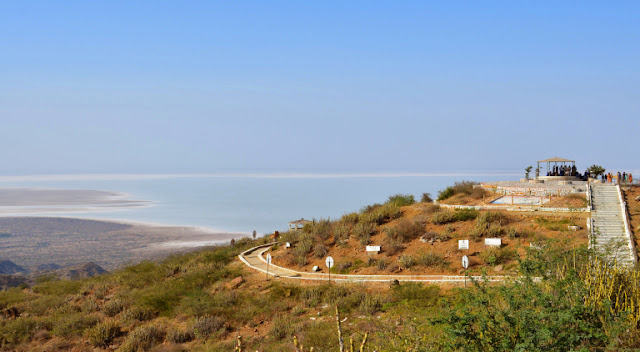The Little Rann of Kutch occupies 4,953 sq km and is spread out in the districts of Surendranagar, Banasakantha, Patan, Kutch and Rajkot in Gujarat. Known as The Wild Ass Sanctuary, the endangered Ghudkhur is seen here in large numbers.
The Rann of Kutch.
Kutch, India’s Wild West, is a geographic phenomenon, full of rustic
beauty. What appears an endless desert plain running dead straight into
the horizon, is in fact a seasonal island. It resembles a Katchua or Kachbo,
meaning tortoise and is surrounded by sea water. Ancient temples,
attractive palaces, rugged forts, flamingos, wild asses, harsh sunlight,
moderate rainfall and the cool evening breeze — you have it all in
Kutch.
The arid lifeless landscape is dotted by villages that produce
some of India’s finest textiles glittering with exquisite embroidery
and mirror work. The district is also famous for the ecologically
important Banni grasslands, which with its seasonal marshy wetlands form
the outer belt of the Rann of Kutch.
The Rann of Kutch is divided into
the Great Rann Of Kutch and the Little Rann Of Kutch. The Great Rann of
Kutch spans an area of 7505.22 sq km. It is home to a wide array of
flora and fauna. During diverse weather conditions migratory birds find a
home here.
The Little Rann of Kutch occupies 4,953 sq km and is spread out in the districts of Surendranagar, Banasakantha, Patan, Kutch and Rajkot in Gujarat. Known as The Wild Ass Sanctuary, the endangered Ghudkhur is seen here in large numbers.
Sunil Dodiya
I’m a amateur photographer, I take pictures of People, Adventure, Holidays, Kids, Landscape, Nature, Plants and Travel.
Location:
Kalo Dungar, Gujarat 370510















0 comments:
Post a Comment